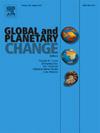Middle Pleistocene weakening of the Indian summer monsoon driven by global cooling
Abstract
The Indian Monsoon profoundly impacts the climate, agriculture, and economy of the Indian subcontinent and southwestern China. However, the long-term variability of the Indian summer monsoon (ISM) and its forcing mechanism in the context of the stepwise Pleistocene cooling trend are poorly understood, due to the lack of high-quality terrestrial paleoclimate records. Quaternary loess and paleosol deposits in SW China provide the opportunity to study the long-term evolution of the ISM. Based on analyses of magnetic properties and chemical weathering indices, we found that decreased chemical weathering and pedogenic intensity occurred in SW China since the Middle Pleistocene. Comparison of our results with published paleoclimate records from the Indian Ocean and SW China suggest that substantial ISM weakening occurred after ∼0.7–0.6 Ma, coincident with the Mid-Pleistocene climatic transition. We conclude that decreasing global surface temperatures associated with the major growth of Northern Hemisphere ice sheets caused the Middle Pleistocene weakening of the ISM, leading to changes in precipitation regimes in the southern Asian continent and SW China. Our results suggest that global cooling is strongly linked with the South Asian monsoon climate system, and they provide clues for predicting future climate changes in its area of influence.

 求助内容:
求助内容: 应助结果提醒方式:
应助结果提醒方式:


